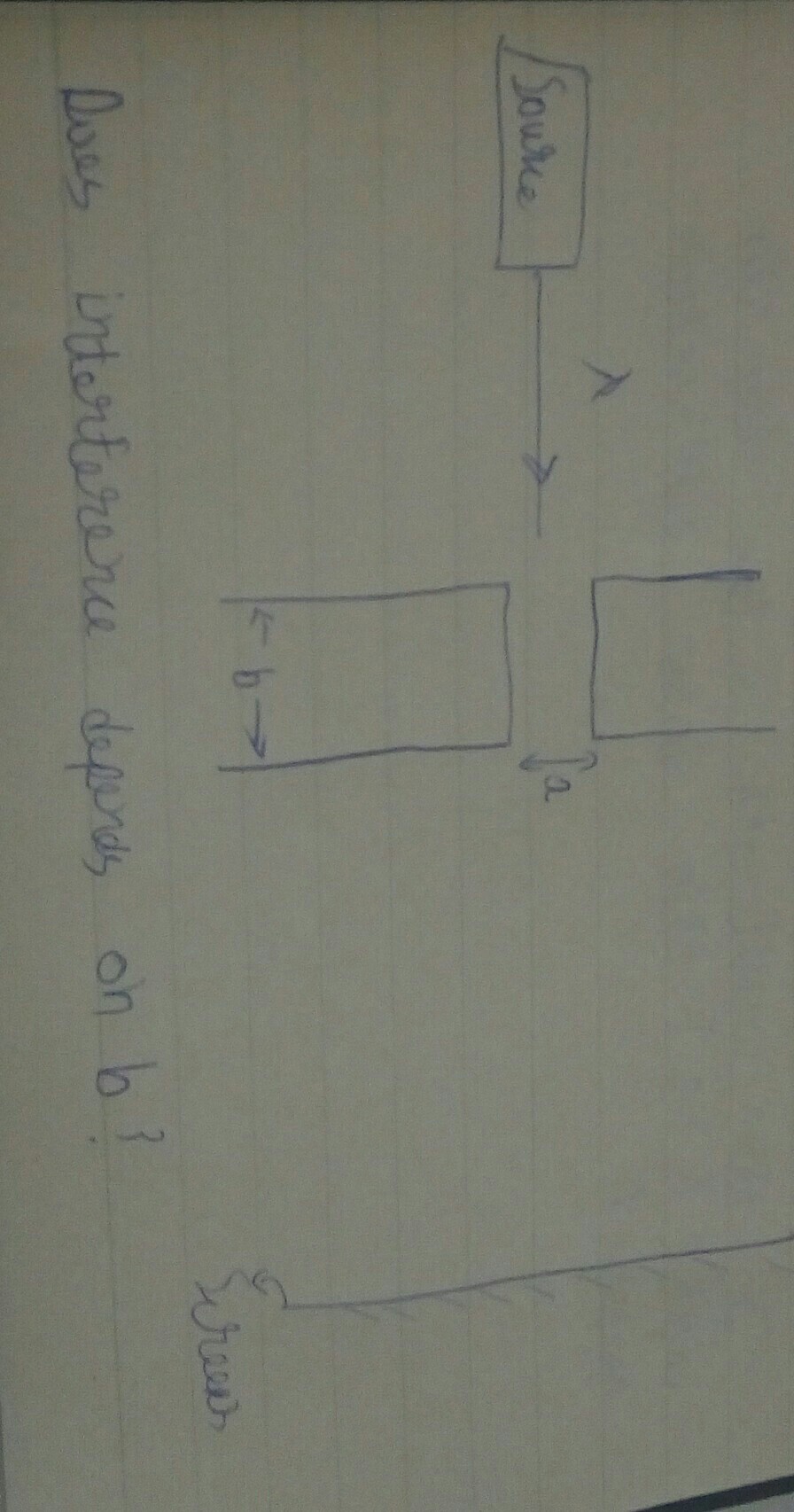I know that diffraction pattern depends upon the width of slit but does the thickness of slit also matters?
If so then what happens to the diffraction pattern at variable slit thickness?
-
1$\begingroup$ The short answer is, no, the thickness does not matter. The wave passes through the gap as it entered. Upon exiting the gap is then when the wave spreads out in all directions. (this is provided the wave enters perpendicular to the slit "face".) $\endgroup$– Brad SCommented Dec 6, 2018 at 19:39
-
1$\begingroup$ Sound like a good simple testable question. If you tested it I’d be interested in seeing the results. $\endgroup$– LambdaCommented Dec 6, 2018 at 19:55
-
$\begingroup$ @BradS Reflections matter. There is Lloyd's mirror. And with a knife edge above a surface, one gets a reflecting slit twice the width. $\endgroup$– user137289Commented Dec 6, 2018 at 23:33
-
$\begingroup$ @Lambda i believe it may depend. i observed diffraction of light from a mobile camera through a slit formed by 2 bus/credit cards. the source of light, thickness of the slit and the width of it all were. if i increased the width of slit, diffraction couldnt be observed. $\endgroup$– Adil MohammedCommented Mar 19, 2022 at 11:11
-
$\begingroup$ On the other hand, i have also observed diffraction of sunlight through my windows. these were horizontal rolling windows link. our windows were covered with wallpaper and you could open it in the center, thereby forming a "slit". I observed diffraction of light on the ceiling even when the width was about 2 inches and the thickness of the windows were also few inches $\endgroup$– Adil MohammedCommented Mar 19, 2022 at 11:16
3 Answers
As soon as you ask such questions you are considering a real material situation, not an abstract one. Which material is the slit made of? Which particle is diffracted? The answer to your question is that the pattern depends on this and on the thickness of the slit.
The answer is yes. How much depends on the details of the materials and sizes of the slit and in some cases how many slits and how close they are together. This is also of interest for small circular holes or patterns of holes rather than a single silt.
The math to work out the details is not easy but essentially you have a more complicated boundary layer problem than a thin slit. in short, rather than working a 2D problem, you have to consider all 3 dimensions.
If you think about it, if the hole is very long compared to the wavelength of light then it would act something like a waveguide and only modes that fit the size of the hole would be allowed to reach the other side.
If the thickness is somewhat comparable to the wavelength of the light and you plot the amount of light that is transmitted as the thickness of the metal film is increased you will find that the amount of light increases and decreases almost periodically.
If the metal is conductive, then the electrons in the metal can also be moved around by the electric field causing a group oscillation called a plasmon. This can enhance the electric field at the edges of the slit or hole. The edge on the other side of the hole can also act like a receiving antenna and sometimes this can let more light be transmitted than a calculation where there are no plasmons. This was a somewhat of a surprise to people in the late 1990's early 2000's.
A lot of the complications are local to the areas near the surface of the aperture (the near field) as you get farther from the aperture (in the far field) the effects are less noticeable.
But keep in mind that for both thin and thick slits you will still get diffraction, although the exact details of the intensity and electric fields can be different depending on where you are looking.
The answer is no. The original DSE by Young was actually performed not with slits, he used a knife edge ... actually a card. The card depth does not matter.
The intensity of the pattern may decrease as less light is accepted if the source is angular .... as opposed to coherent like a laser source.
What causes the pattern ... the most in depth explanation is Feynman's path integral. According to QM light/photons prefer certain paths over others and the preferred paths tend to be ones where the path length is an integer multiple of the wavelength. In the DSE there are no photons in the dark areas .... they all go to the bright bands.
